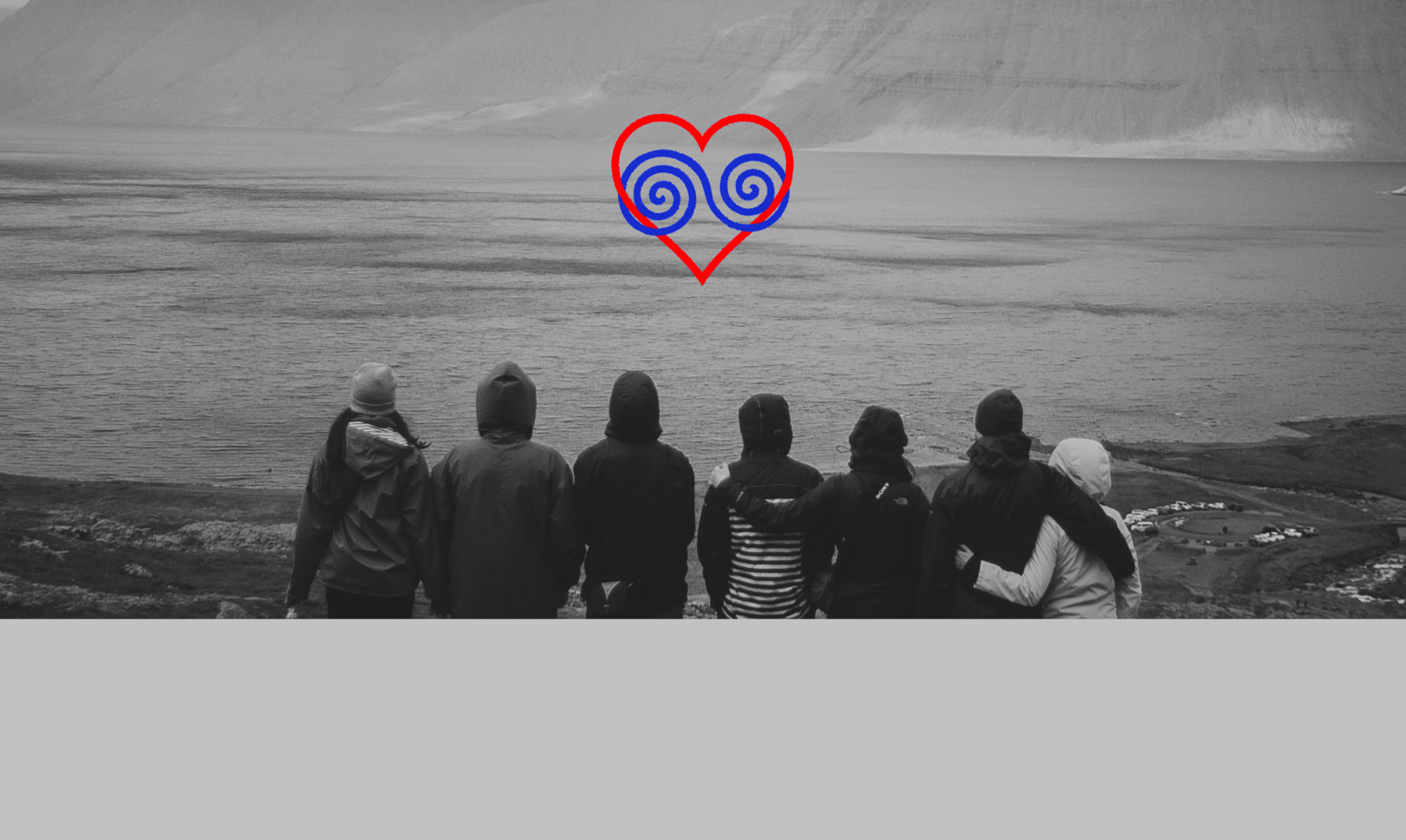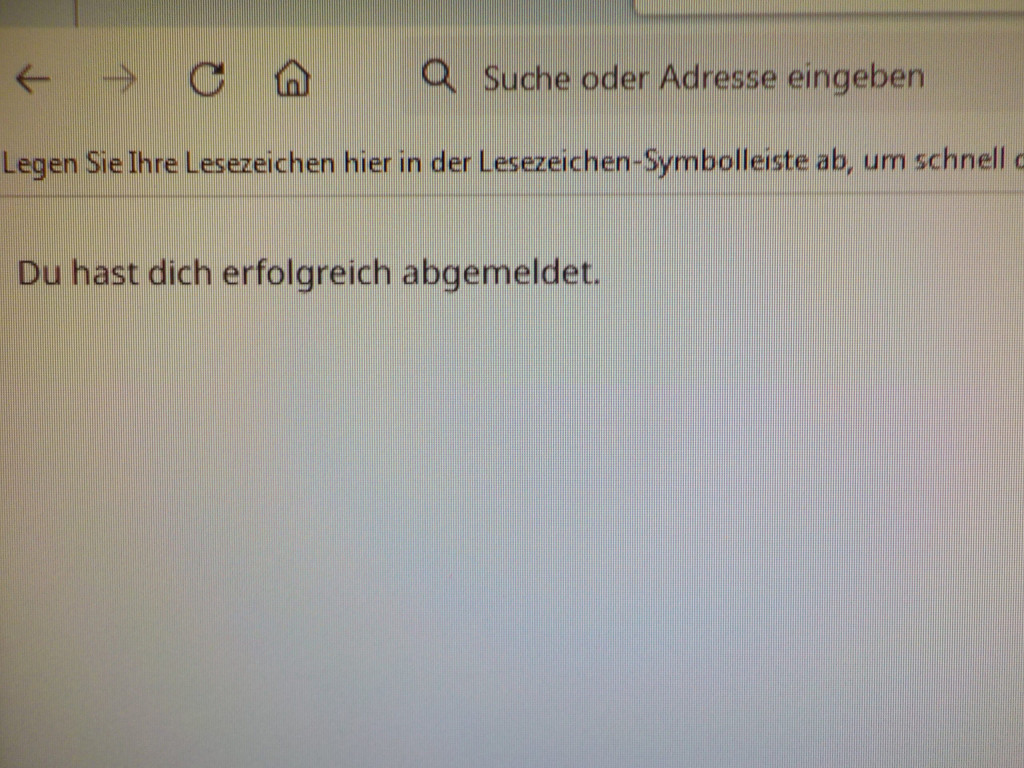Head and Foot – or: The Blind One and the Lame One

A friend recently asked me how my bLog-Entries usually came about. And I replied ” It’s quite different – sometimes it can even be just one word that sticks in my mind – and a complete Entry emerges from it.”
That’s how it is today, for example, with the word “dependency symbiosis”, which I had picked up some time ago in a completely different context than the universe of multiple relationships.
I was initially confused by this phrase because it appeared to me as if it consisted of two very different halves that didn’t fit together at all – indeed, they seemed to contradict each other.
And then, once I had turned the whole thing over in my mind and then in my heart, I smiled, because all of a sudden I found the term almost somewhat pretty in its symbolism – and in this case especially for the universe of multiple relationships.
According to Wiktionary, “dependency” means being “dependent on, or subordinate to, something else”. And with that, the poor little word “dependency” generally loses most of its charm straight away. Because being “dependent”, being reliant on someone or something, sounds kind of sticky, attached, dependent and restricted. As a result, “dependency” becomes immediately suspected of being the antonym (= the opposite word) or in some ways even the antagonist (= opponent) of our much-loved and longed-for “freedom”.
And then there is the word “symbiosis”. Here Wiktionary defines: “A relationship of mutual benefit, especially among different species” or “The state of people of different types, races, cultures, communities, etc., living together”. Therefore, symbiosis seems to be something good and worthwhile for those involved.
However, this also reveals that the dependency that was initially perceived as negative in our original pair of words and the symbiosis that seems so promising aren’t really opposites at all. Because in order to benefit from the advantages of a symbiosis, the participants would presumably have to get involved in this “being dependent upon each other” for such a symbiosis to come about at all… After all, this is the inherent secret to the success of any symbiosis: for it to work – and “work” in this case means that all those involved experience (additional) benefit – those parties need „not only merely “consume”, but also “provide” voluntarily”, as I wrote in the last Entry.
Today’s Entry is intended as a little ” Reminder” regarding ethical multiple relationships. Because the danger that we ponder too much in our relationships – and often from an overly self-centered point of view on top of that – still seems very high to me.
Especially in a world where we are regularly bombarded with memes on social media that state in calligraphy letters against a romantic photo background “True love sets you free!”.
And now here I am, preferring instead to write “True love… …is symbiotic!” – and I can almost hear the tips of some readers’ hair begin to bristle at this sentence.
Okay, more regular consumers of my bLog will know that “dependency” in relationship matters is not fundamentally a bad thing for me, at the latest since my “Declaration of Dependency” in Entry 24. There I wrote – as a kind of conclusion – that »according to oligoamorous standards, “mutual interdependency” per se is therefore not a deficiency in need of treatment which has to be eradicated, and it is neither toxic nor pathological in its conscious form.
Such a well-adjusted, or even better: well-established, reciprocal joint venture is rather a committed, dynamic and open relationship that benefits from regular negotiations and (re)adjustments.«
For me, however, it is also something more than that. Because at the end of the day, I feel that Oligo- and Polyamory is all about nothing less than true, romantic love between folks who are attached to each other in this way. And as I furthermore stated in Entry 34, based on my life experience so far, »the core of the “romantic narrative” is the voluntary self-sacrifice offered to the community.«
The latter sentence in particular always comes across as incredibly dramatic when you read it, which is why I immediately deprive this dynamic of its (high) tension in the associated Entry.
Symbiosis, if it is meant to be romantic (and not just a relationship of convenience), therefore also requires precisely this self-sacrifice.
And that is probably why we somehow feel such an uncomfortable pinch when we hear the term “self-sacrifice”, because it is not possible without the above-mentioned “dependence” and thus a partial surrender of our full “non-dependence” concerning our greatest possible freedom.
That is also one reason why I have prefaced this Entry with Entry 102, in which I celebrate the very freedom that allows us to make choices about our desire to participate and take up responsibility.
For surely it must be after all an expression of the core of our being, which seeks development, if we find within ourselves the desire to participate in a “symbiosis” (I repeat: “A relationship of mutual benefit”) and thus willingly assume responsibility for our own contribution to the prosperity of this structure.
In relationships, we are therefore initially always dealing with voluntary self-limitation – an extremely romantic motif, by the way. For example, as self-sacrificing and romantic as some gentlemen with stiffened collars acted in 1863 when, in the face of a wild scramble for a leather ball, they resolved henceforth only to move it fairly and gentlemenlike just by using their heads and feet – and in this way became the founders of modern soccer…
Today, during the run-up to the final of the current UEFA Euro 2024, I think soccer is a very apt metaphor in this context. After all, what did these people want to achieve back then when they voluntarily limited themselves – and accepted “less”?
They wanted to create “added value” for everyone – because they believed that with brute strength and physical effort, someone would eventually be able to put a ball in the goal anyway (which sooner or later wouldn’t have been very interesting, except for people who wanted to watch the most pimped-up and reckless protagonists at work…).
Out of their self-limitation, however, emerged a dynamic, exciting and inclusive game in which people of all ethnicities and genders, with their diverse talents in endurance, skill, agility, courage, resourcefulness and luck, compete internationally for attention and prizes to this day.
So after a while, the advantages of reciprocity and interdependence, as in a symbiosis, may come to us after all – even if we realize that we must obviously (voluntarily!) give up part of our personal freedom if we really want to participate and benefit.
And in the vast majority of cases, this refers to the “fair-weather face” of love, about which I wrote in the previous Entry: »Hand on heart: if there wasn’t something in the relationships we enter into that we wanted to “enjoy” – as mentioned above – we probably wouldn’t be in them…«
It’s like soccer again: Sure, with present-day rules (which I agreed to and limited myself by) I can’t knock down the guy in possession of the ball to get access to the leather like in the ol’ times. Instead, I have to stalk the opponent and dribble the ball off his foot, after which I can pass it to my teammates or (hopefully) score myself… But at the end of the day, I’m not just a dull thug who has perhaps even accepted collateral damage for personal success – I’m a sought-after ball artist in a successful team!
And because it’s not about the strongest or most assertive players on the field – because that’s not how symbioses work – maybe next time it will be me who gets the ball to shoot at the goal anyway – because I’m in the best position to do so.
Ok – in my relationships I can benefit by contributing. And through romantic self-restraint, I experience added value that I would otherwise never have been able to enjoy or create on my own.
But what about this implied (= action that suggests a certain declaration of intent without this declaration having been expressly made in the action [e.g. consent to a loving relationship]) responsibility for the prosperity and sustenance of such cohabitation and love?
Why did I write in the previous Entry »However, if we are serious about our desire to share in a (loving) relationship, then responsibility is also involved at the same time – self-responsibility and also responsibility for the well-being, the “state of health” of the relationship«?
Even the Wikipedia entry on “Symbiosis“ shows different degrees of interdependence and actually suggests “[Certain organisms] can generally live independently, and their part of the relationship is therefore described as facultative (optional), or non-obligate”. Wouldn’t that also be a way to handle human, romantic relationships with multiple participants?
I believe that such thoughts creep in primarily when we realize that neither love nor we personally are always able to operate only on the side of the above-mentioned “fair-weather face” of contribution and enjoyment.
On this subject, the Buddhist Shaolin master Shi Heng Yi recently said something very touching in his series “positivegedanken” on Instagram, which even brought to mind parts of the Christian wedding vows:
»And loyalty means knowing that there will be moments when we might disagree.
But precisely because I know that this might be a difficult time for one person, because there will be a lot of criticism and a lot of embarrassment – or whatever – that’s exactly why this person needs support now.
If everyone always talks positively, favourably and optimistically, then it’s [easy] to find a crowd of people to surround yourself with.
But there is a core [of people] that is not only there in good times, it is there above all in times when others run away. And every person should have a core like that – and sometimes that’s no more than a handful.
But what’s the beauty of it? That it gives you stability. Because you know that no matter what comes your way: I have a job, I don’t have a job – they’re there. I have a girlfriend, I don’t have a girlfriend – they’re there.«
Master Shi Heng Yi thus says that the important concept of loyalty is not a “fair-weather standard”, but one whose value is precisely proven when it prevails in conflicts with one another – and gets confirmed that way.
And “loyalty”, which is already listed as a basic value of Oligoamory in Entry 3, has the following great definition on the German-language Wikipedia “The intrinsic solidarity that is based on shared moral maxims or guided by a rational interest and its expression in conduct towards a person, group or community. Loyalty means sharing and defending the values of others in the interest of a common higher goal, or defending them even if one does not fully share them, as long as this serves to preserve the jointly shared higher goal. Loyalty is demonstrated both in behavior towards the person to whom one is loyal and towards third parties.”
Both elements are contained here: The romantic, voluntary self-restraint (“…to represent these even if one does not fully share them…”) and the responsibility for the greater entirety, which is to be preserved and supported (“the preservation of the jointly represented higher goal…”), which are entwined by our desire for – and our free choice of – “intrinsic solidarity”.
The bottom line is that even the “(dependency) symbiosis”, which might initially be viewed with a frown, is not at all a fair-weather event. Because once united, the door of weal and woe swings in every direction for all those involved.
“You see, and that’s why I would avoid such a symbiosis right from the start…!”
Really? That would be exactly the wrong lesson to draw from the above. For it is precisely the symbiosis that makes it possible to absorb grievances or misunderstandings in a completely different way than we could ever succeed in acting as mere individuals.
Nowadays, a soccer team is usually put together in such a way that talents complement each other as much as possible to achieve top performances.
But centuries ago in the Middle Ages – a time when people were probably much more fundamentally aware of their imperfections and dependencies than we are today – the double figure of “the Blind One and the Lame One” was created, to which the German folk-rock band “Ougenweide” created another acoustic monument in modern times on their album “All die weil ich mag” (1974) with the setting of a text by the German poet Christian Fürchtegott Gellert¹. In the song, a lame cripple and a blind man meet. After a short negotiation, the blind man carries the lame man, who in return guides the blind man in the right direction. The song culminates with the lines:
Conjoined, this pair realises
What no one could do individually.
You do not have what others have
And others lack your gifts.
From this imperfections
The sociability springs forth.
If he did not lack the gift,
Which nature chose for me,
He would be for himself alone now
And not be troubled for me…
Do not burden the gods with complaints!
The advantage they deny you
And bestow on him will be made common:
We must be sociable only!
“Sociability”, as the people of the Middle Ages (and even Mr. Gellert in the 18th century) once called it, has a slightly different meaning today: We now say “community” or “companionship”.
“Dependency symbiosis”? Perhaps it’s a word that should be consigned to the past as well. We could call it “solidarity” these days. Or, in a romantic relationship involving several people, we could simply call it: love.
¹ Incidentally, the German poet and moral philosopher Christian Fürchtegott Gellert saw himself in continuity with the ideas of the English philosopher, writer, politician, art critic and literary theorist Anthony Ashley Cooper – 3rd Earl of Shaftesbury, whom I admire and quote in Entry 64.
Thanks to Mary Taylor on Pexels for the photo!










